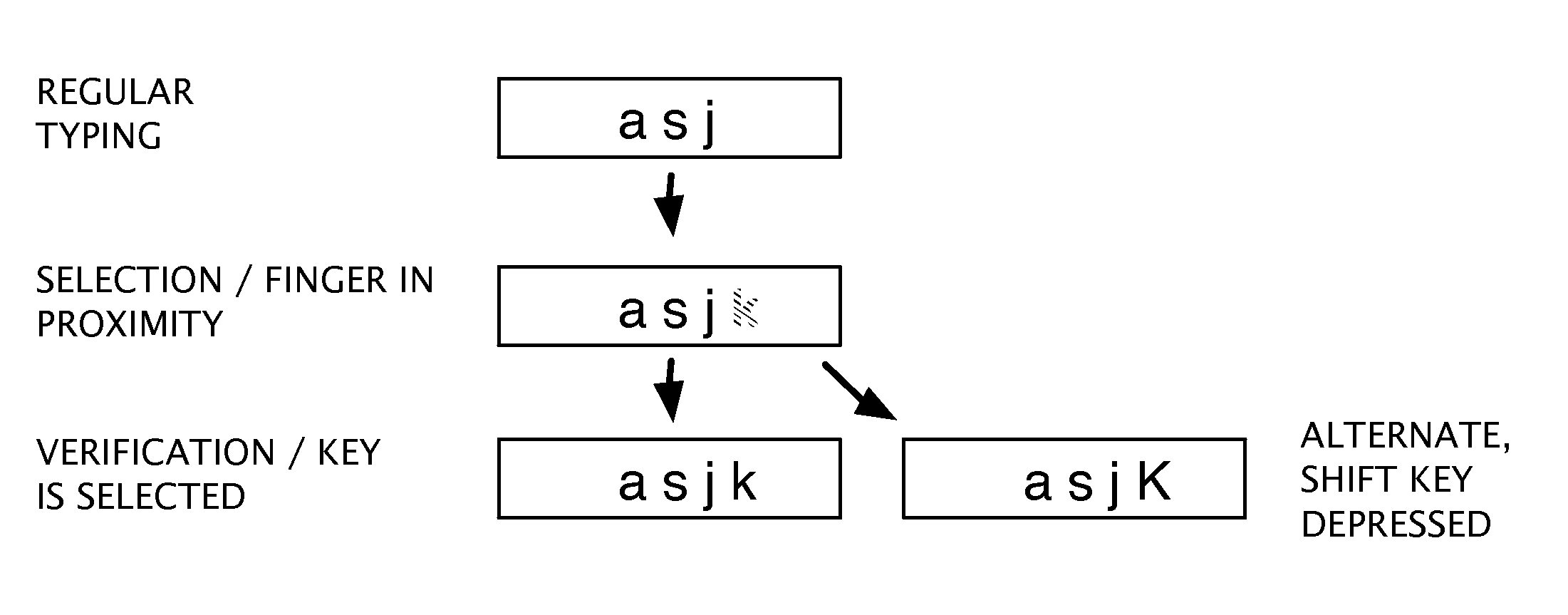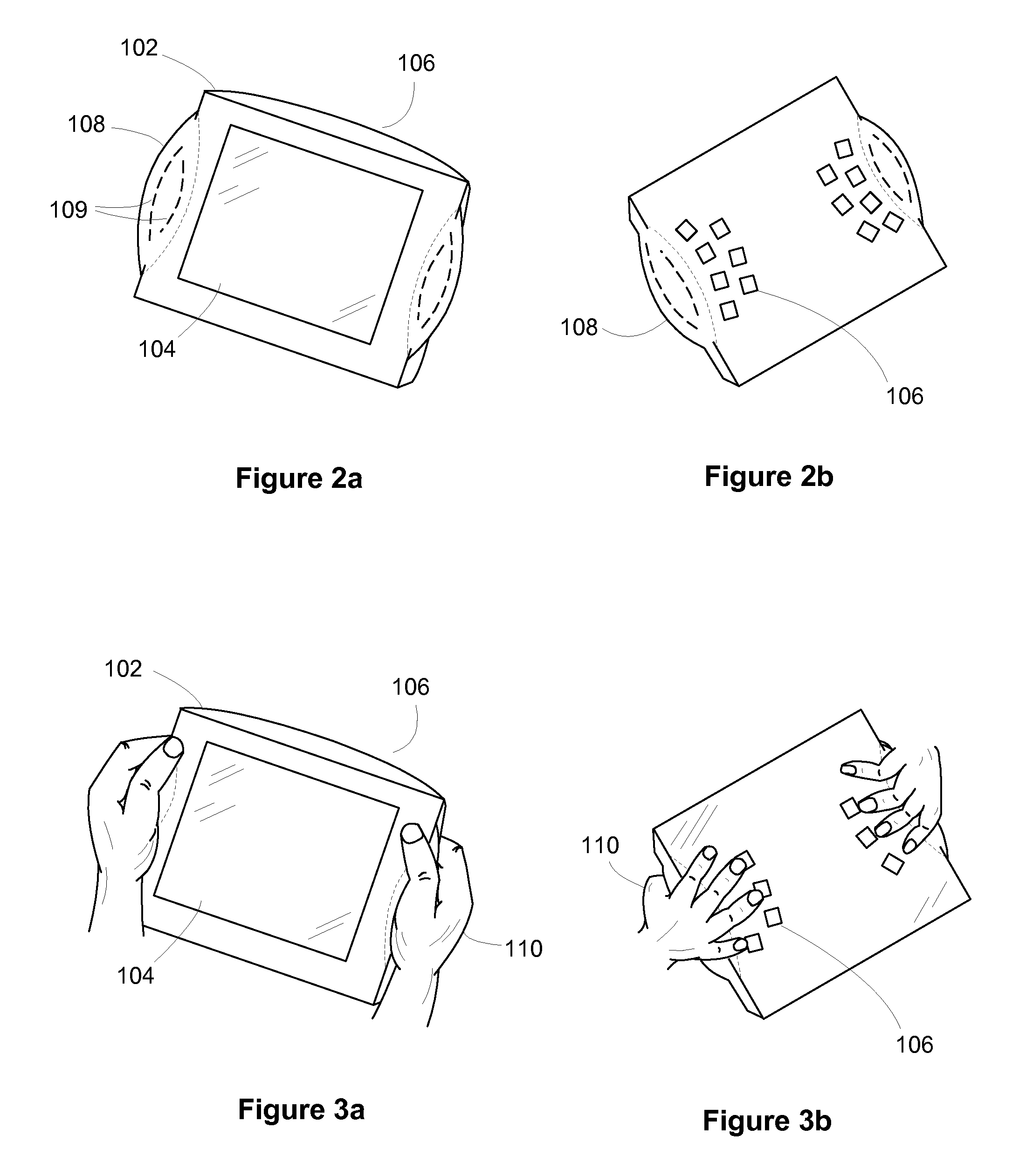System and method for providing a keyboard type interface for a computing device
a computing device and keyboard technology, applied in computing, instruments, electric digital data processing, etc., can solve the problems of inability to provide a keyboard type interface, personal computing devices are rarely passive, and the laptop is then much larger than it really needs, so as to reduce wiring requirements, maximize the available display space for users, and facilitate operation
- Summary
- Abstract
- Description
- Claims
- Application Information
AI Technical Summary
Benefits of technology
Problems solved by technology
Method used
Image
Examples
Embodiment Construction
[0037]Unlike the traditional methods of providing computer interfaces described above, the invention provides a system or interface device which includes an operator interface device, such as a keyboard, that is either permanently or affixably attached to the sides and / or rear of a display device, in such a manner that it can be easily and naturally manipulated by the operator while viewing the display screen. The housing can be suitably designed so as to be comfortably held or grasped substantially within the palms of the operators hand or hands, leaving the fingers free to operate the keyboard while still providing the operator a measure of control in holding the device. This is particularly important in situations in which no desk or worktop is available, or in which the operator simply prefers to stand. Embodiments of the invention may employ key selection and verification devices and methods to assist the operator in successfully navigating those keys that are otherwise hidden ...
PUM
 Login to View More
Login to View More Abstract
Description
Claims
Application Information
 Login to View More
Login to View More - R&D
- Intellectual Property
- Life Sciences
- Materials
- Tech Scout
- Unparalleled Data Quality
- Higher Quality Content
- 60% Fewer Hallucinations
Browse by: Latest US Patents, China's latest patents, Technical Efficacy Thesaurus, Application Domain, Technology Topic, Popular Technical Reports.
© 2025 PatSnap. All rights reserved.Legal|Privacy policy|Modern Slavery Act Transparency Statement|Sitemap|About US| Contact US: help@patsnap.com



